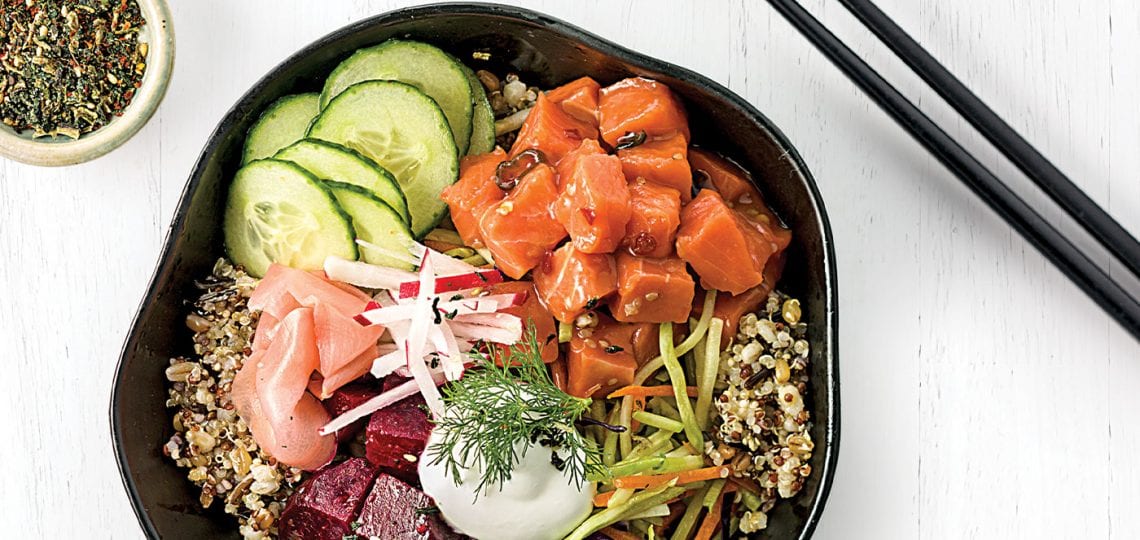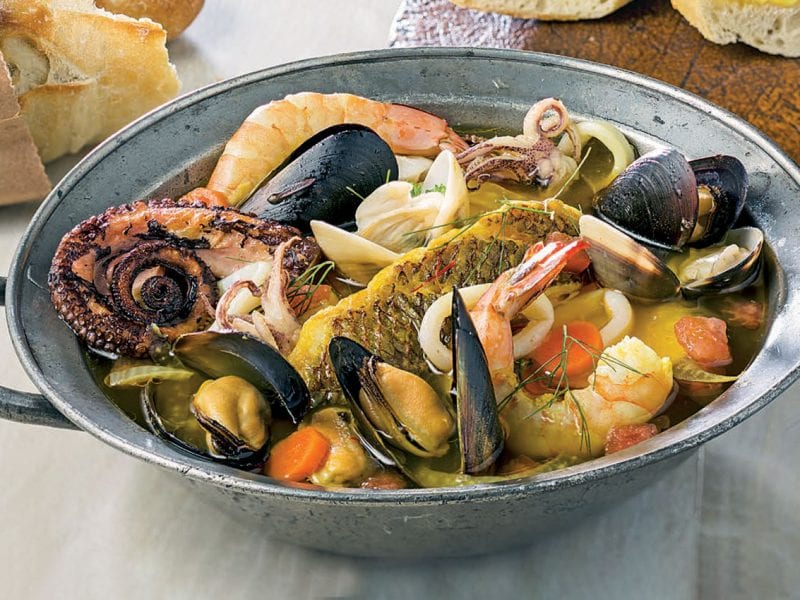An Ocean of Inspiration
Seafood, a menu workhorse that’s often overlooked, is starting to get a bit more attention from operators—and it’s easy to see why: 89 percent of consumers say they eat seafood at least once a month, with a third of respondents saying they choose seafood over other proteins because they want “something different.” And because many diners are not willing to tackle the preparation of these sometimes daunting ingredients at home, it’s an area of opportunity for restaurants.
However, despite the availability of alternative seafood products, many restaurants fall back on traditional choices, such as salmon and shrimp, and miss an opportunity to diversify menus. Operators can create more interest in their seafood lineup in many ways, such as embracing new presentations, including trending ethnic and regional specialties, and introducing new species to the menu.
Look Beyond the Expected
Offering customers on-trend ethnic and regional specialties is a terrific way to satisfy demand for more variety while also keeping a lid on food costs.
Poke bowls are a prime example. Poke’s popularity and flexibility are two good arguments for carving out a space on casual menus. Essentially just a salad of cubed fish and a variety of colorful, complementary ingredients, poke bowls can be constructed from various species, including tuna, salmon and amberjack. Take the guesswork out of this dish by using the Great American Seafood Poke Kit from Sysco Cutting Edge Solutions.
Seafood stews, soups and curries from various cultures are also incredibly popular.
“We’re starting to see more ceviches, bouillabaisses, paellas, and items like Thai and Malaysian fish soups and seafood curries,” says Neil Doherty, Senior Director of Culinary Development for Sysco. “Dishes like these satisfy customers’ cravings for newer, bolder and more authentic flavors, and they’re a great way to use trimmings and small quantities of leftovers and still boost profits.
These items also give customers exposure to cuisines and dining experiences they might not attempt to produce at home.
“Anyone can cook a slab of salmon at home, but it takes more skill to prepare these kinds of dishes,” says Doherty. “The average home cook isn’t going to go out and buy four types of seafood to make a dish.”

Many Fish in the Ocean—and Elsewhere
With the increase in demand for seafood, overharvesting concerns have risen in the last decade. Chefs committed to sustainability are choosing to source their fish a bit differently than in the past.
- Consider bycatch varieties—Cooking with fish that are unintentionally caught in commercial nets addresses the sustainability question while also reducing food waste, as fewer fish end up discarded. Chefs who go this route need to be creative. The supply is often seasonal in nature. And since these aren’t your everyday fish, guests might need a little coaxing to try something novel.
- Look beyond the obvious farmed fish—Aquaculture, which now produces more than half the world’s supply of seafood (United Nations Food and Agriculture Organization), has eased the pressure on wild-caught seafood and evolved to encompass high-quality products with greater variety. The top-selling categories continue to be shrimp and salmon, but lesser-known species such as cobia, sea bream, rockfish and European sea bass are making headway on more menus. Because they aren’t raised in the wild, farmed fish yield a more predictable supply—a plus for restaurants that don’t change their menus frequently.
- Source widely available but overlooked seafood—Cooking with fish that are unintentionally caught in commercial nets addresses the sustainability question while also reducing food waste, as fewer fish end up discarded. Chefs who go this route need to be creative. The supply is often seasonal in nature. And since these aren’t your everyday fish, guests might need a little coaxing to try something novel.
Tips
- Roll out new seafood items via LTOs (limited-time offers), which signal limited availability and help gauge demand.
- Consider less-familiar species to create menu excitement.
- Small-plate trios—three types of fish tacos, or three skewers of grilled fish and shellfish, for example—can broaden a restaurant’s appetizer repertoire and provide a low-risk introduction to new seafood items.













